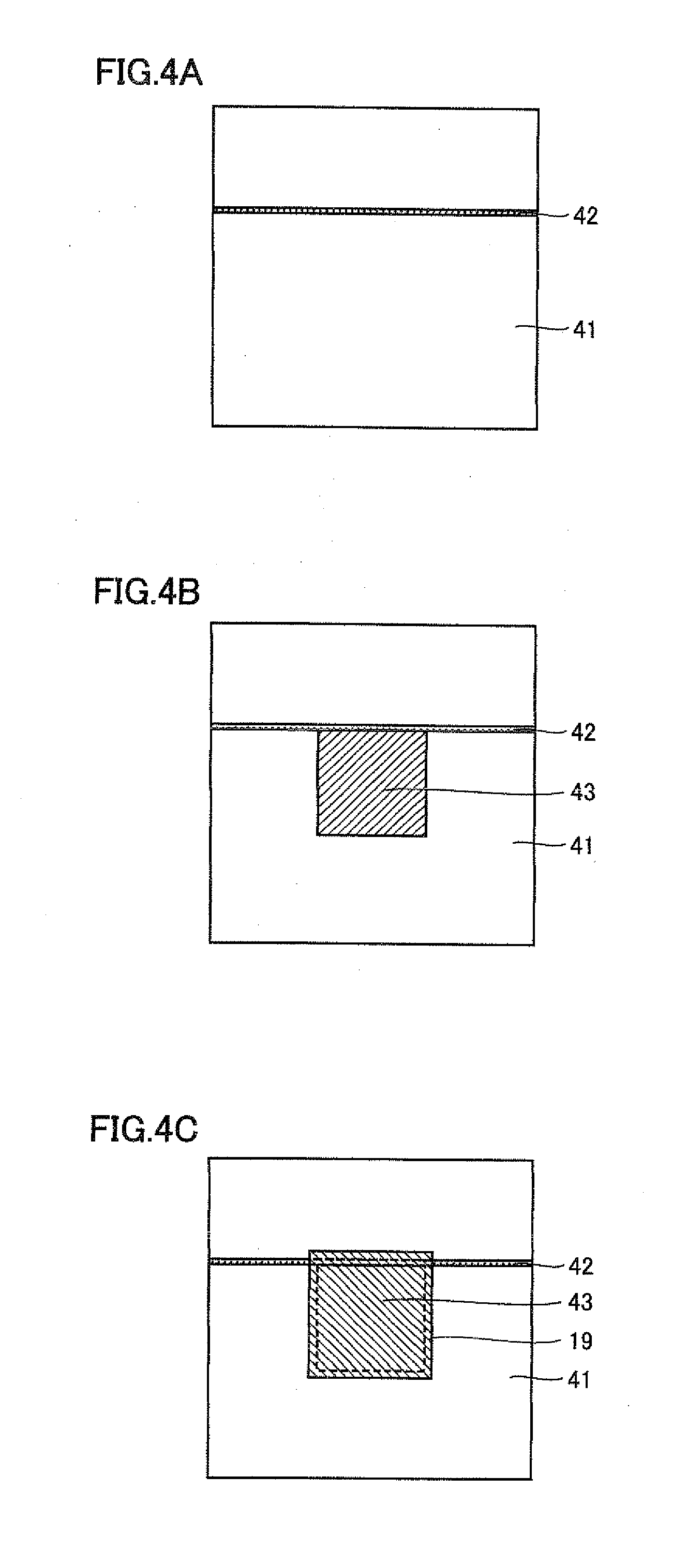Dye-sensitized solar cell and dye-sensitized solar cell module
- Summary
- Abstract
- Description
- Claims
- Application Information
AI Technical Summary
Benefits of technology
Problems solved by technology
Method used
Image
Examples
example 1
[0115]In Example 1, a dye-sensitized solar battery cell shown in FIG. 1 was prepared.
[0116]A transparent electrode substrate 41 (by Nippon Sheet Glass Co., Ltd., glass provided with SiO2 film), in which a conductive layer made of fluorine-doped tin oxide (FTO) was formed on a support body consisting of a glass substrate, was prepared. The transparent electrode substrate 41 was 30 mm by 30 mm having a thickness of 4.0 mm. As shown in FIG. 4A, the conductive layer of transparent electrode substrate 41 in which the support body and the conductive layer were stacked was cut by laser scribing, to form a scribing line 42 (FIGS. 4A to 4E are schematic diagrams in a case of observing the dye-sensitized solar cell from the upper surface). Then, commercially available titanium oxide paste (by Solaronix SA, trade name: D / SP) was applied by employing a screen plate having a pattern of a porous semiconductor layer shown in FIG. 4B and a screen printer (by Newlong Seimitsu Kogyo Co., Ltd, type nu...
example 2
[0132]A dye-sensitized solar cell was prepared by a method similar to that in Example 1 except that an insulation coating portion consisting of an Al2O3 film whose thickness was about 5 nm was formed on the overall surface of porous insulating layer 19 by employing 6 μL of a 5 weight % ethanol solution of aluminum isopropoxide (by Kishida Chemical Co., Ltd) after forming porous insulating layer 19 in Example 1, and photoelectric conversion efficiency was measured. Further, the porous zirconia membrane provided with the Al2O3 insulation coating portion was separated similarly to Example 1, and the quantity of dye adsorption on the porous insulating layer was measured. Table 1 shows the conversion efficiency and the quantity of dye adsorption in the dye-sensitized solar cell.
example 3
[0133]A dye-sensitized solar cell was prepared by a method similar to that in Example 1 except that an insulation coating layer of MgO whose thickness was about 5 nm was formed by employing 6 μL of a 5 weight % ethanol solution of magnesium ethoxide (by Kishida Chemical Co., Ltd.) after forming porous insulating layer 19 in Example 1, and photoelectric conversion efficiency was measured. Further, the porous zirconia membrane provided with the MgO insulation coating portion was separated similarly to Example 1, and the quantity of dye adsorption on the porous insulating layer was measured. Table 1 shows the conversion efficiency and the quantity of dye adsorption in the dye-sensitized solar cell.
PUM
 Login to View More
Login to View More Abstract
Description
Claims
Application Information
 Login to View More
Login to View More - R&D
- Intellectual Property
- Life Sciences
- Materials
- Tech Scout
- Unparalleled Data Quality
- Higher Quality Content
- 60% Fewer Hallucinations
Browse by: Latest US Patents, China's latest patents, Technical Efficacy Thesaurus, Application Domain, Technology Topic, Popular Technical Reports.
© 2025 PatSnap. All rights reserved.Legal|Privacy policy|Modern Slavery Act Transparency Statement|Sitemap|About US| Contact US: help@patsnap.com



